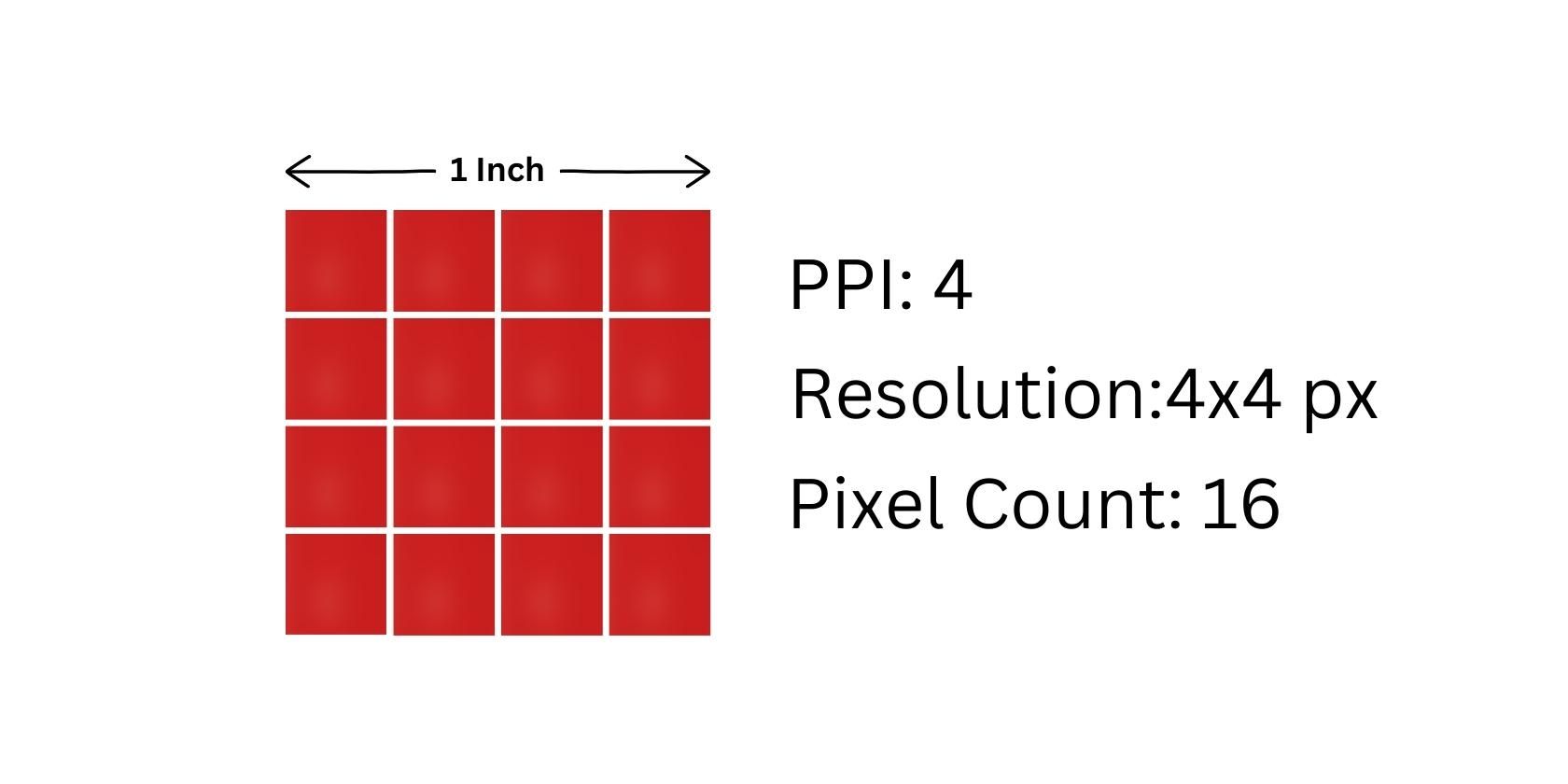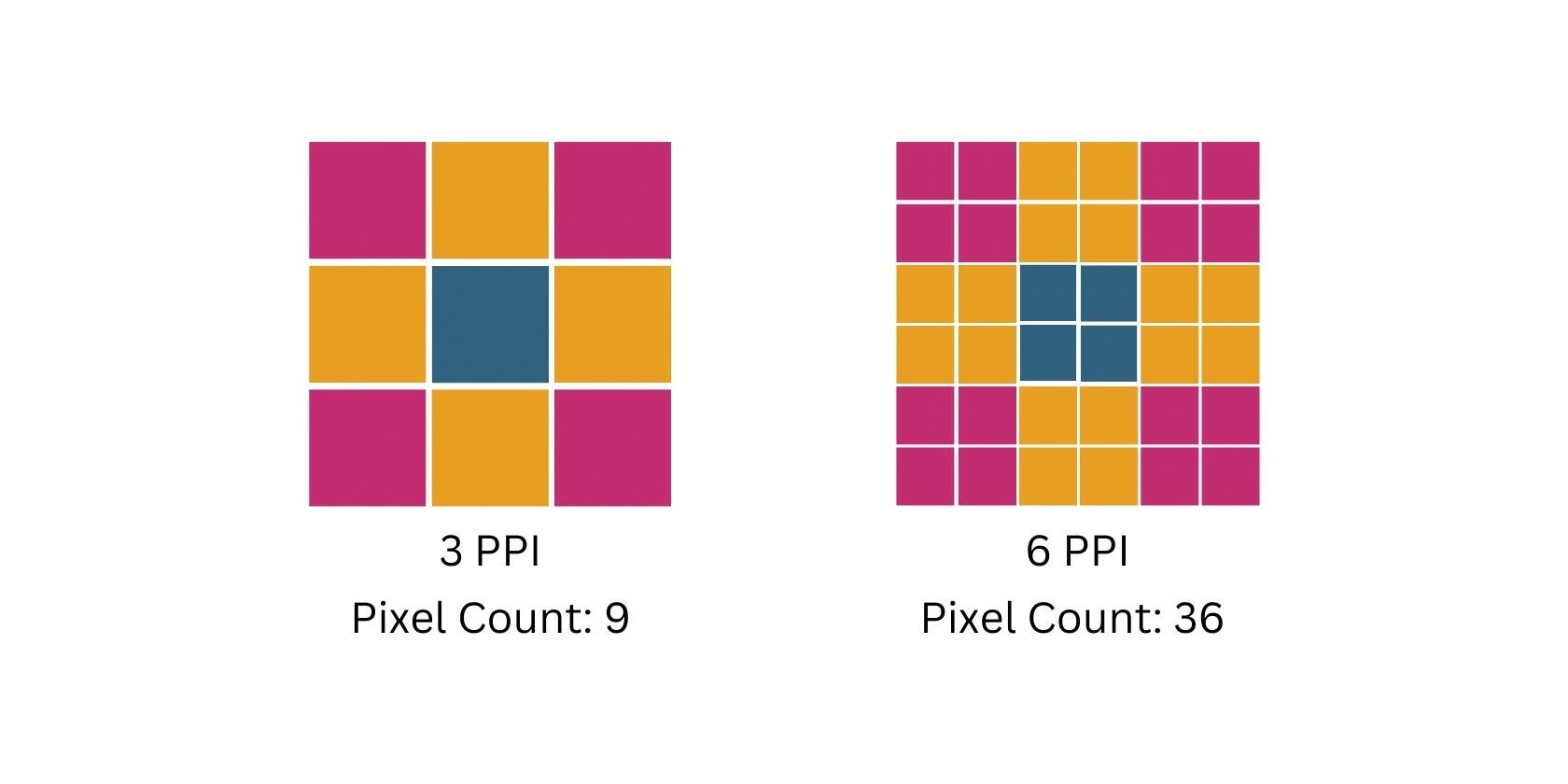Dots Per Inch (DPI) and Pixels Per Inch (PPI) are often interchangeably used to denote the resolution of an image. Although both terms affect an image's quality, they are used on entirely different technologies and should be appropriately differentiated. Knowing their differences and proper usage is essential for anyone working on design, illustration, photography, printmaking, and just about anyone interested in display technology.
To clear out any confusion you may have between DPI and PPI, it's time to understand their differences, how they work, how they affect images, and their proper usage.
The Difference Between DPI and PPI
PPI determines the number of pixels a digital screen can display per inch, while DPI talks about the number of ink dots a printer can deposit on a medium (such as paper) per inch.
The term DPI is only used for printing purposes and does not affect the resolution of a digital image. On the other hand, PPI is mainly used to denote the resolution of a digital image but can also affect the clarity of print if PPI is too low.
To understand why PPI can influence the print quality of an image, but DPI does not affect digital resolution, let us dig deeper and discuss how PPI and DPI work.
Understanding Pixels Per Inch (PPI) and Digital Display
As discussed earlier, PPI is a measurement that denotes the number of pixels per inch of a digital display or image.
A pixel is the smallest element or point of a digital image. A pixel, however, doesn't have any fixed measurement until it is viewed on a digital display such as a monitor. Generally, smaller pixel sizes lead to crisper images since more pixels can be packed within the digital display.
To measure how small these pixels are, PPI is used to determine how many pixels are packed within a square inch of a display. This means that a 4 PPI image has a pixel count of 4 x 4 pixels or 16 pixels condensed into one square inch of the display. Doubling the PPI of an image quadruples the number of pixels within a square inch of the display.
When viewed on a monitor, pixels can further be subdivided into sub-pixels. Some LED displays use sub-pixels to represent a pixel. They are made out of micro-LEDs that can display red, green, and blue (RGB). Although digital displays only utilize RGB, through additive color processing, these highly condensed subpixels can create all the colors your panel can display.
When Does PPI Matter
PPI is an important measurement to determine the quality of an image in relation to its set display size and viewing distance. In theory, as displays get farther away from you, a lesser PPI is needed to provide quality imagery. As the display gets nearer your eyes, a higher PPI is needed to show quality images.
This is why you won't see much difference in the image quality of a 300 PPI smartphone and a 110-250 PPI monitor, assuming you're viewing your monitor a full arm-length away. Of course, as displays get farther away from you, the display will have to be bigger for you to view images comfortably. This is why smartphones usually have screen sizes of 5-6/6.5 inches, while monitors will screen sizes of 15-34 inches.
Keeping PPI in mind when deciding an image's resolution will help ensure you have a quality image in whichever physical size you want. So if you were to create a five-inch square illustration for a website and wish it to have a PPI of 96 (standard PPI for web images), you'd have set your illustration's resolution to 480 x 480 pixels. You'd also need to remember if the digital displays can handle the amount of PPI you will set for your image.
Having the correct PPI will also ensure that your images have enough quality in them in case you want to print them on paper or any other physical medium.
Understanding Dots Per Inch (DPI)
DPI refers to the number of dots a printer can deposit on a physical media such as paper. DPI only concerns print and has nothing to do with anything digital. DPI can be adjusted through editing/printing software to communicate to the printer how fine it should spray its pigments on paper.
If you've ever changed printer cartridges, you'll know printers only use three or four colors. Just like how PPI uses RGB colors and additive color processing to fool the eye into seeing thousands of color hues, printers utilize what is known as CMYK (cyan, magenta, yellow, and black).
For printers to print a wide array of colors from the limited CMYK color cartridges, printers spray pigments into paper in various dot patterns, sizes, and frequencies. Depending on the color, the printer may have to do multiple passes on the paper to partially or entirely mask the initial pigments to achieve the desired color. Each time a pigment is masked, the less light it reflects, producing darker hues.
When Does DPI Matter
DPI matters when setting the print resolution of an image. Knowing what DPI to use for specific prints will ensure you set the correct DPI settings, saving you money and time by using the optimal amount of ink without compromising image quality.
The industry standard for printing photographs and images on paper would be 300 DPI. Although great for general printing, a 300 DPI may be too low or too high depending on paper quality, the size of the print, and what the print will be used for.
For example, most billboards only need 10-30 DPI to produce quality images when viewed across the street. Using the standard 300 DPI would only cause you a ton of ink and time, and no one would notice the difference.
PPI and DPI Ensures Image Quality for Different Mediums
PPI and DPI are entirely different terms concerning two different mediums of viewing an image. PPI is used to determine the quality of a digital image in relation to screen size and viewing distance. In contrast, DPI is used to determine the quality of a printed image in relation to print size and viewing distance.




